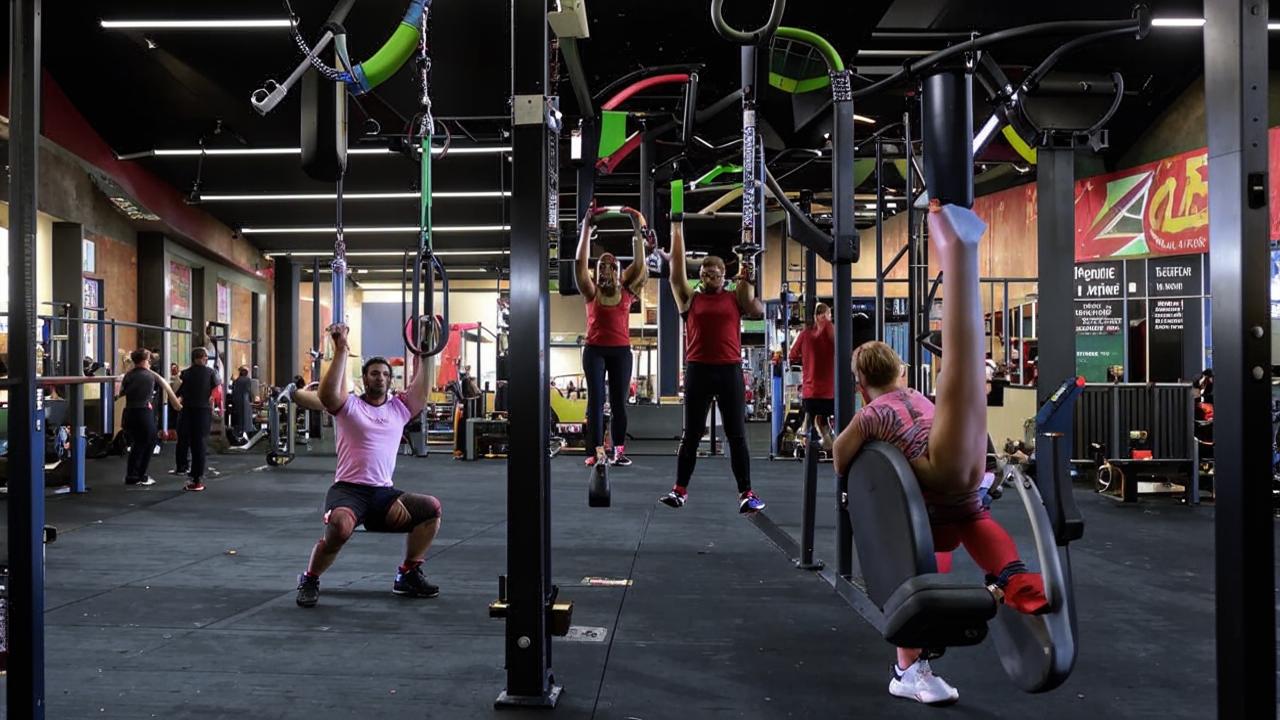“Chameleon” in training! And no, we didn’t bring a lizard to the gym, that’s the name of the exercise. You don’t need to blend in with your surroundings, but it’s worth taking a closer look at the reptile’s gait. We have a lot to learn from them. Repeating the movements of animals can be not only rewarding, but also very challenging.

member of the Evotren mentoring community.
“The chameleon exercise is a modified walking (crawling) movement of a lizard. Man has been observing animals for quite a long time and even imitates them in some movements. For example, the Animal Flow exercise methodology, created by a fitness instructor who was inspired by the behavior of animals and the functionality of their body movements. The “chameleon” exercise resembles the “crocodile” exercise from Animal Flow, but in a more complex form. Animal movements can also be seen in some martial arts: jiu-jitsu, kung-fu and capoeira”.
How is the exercise useful?
“Chameleon” is characterized by its functionality, performing it, you can develop strength, coordination and accuracy of movements. The exercise involves a large number of muscles:
- pectoral muscles;
- cor – all muscles responsible for maintaining the health and integrity of the spine: paravertebral muscles of the spine, back muscles, straight and oblique abdominal muscles;
- arm muscles: shoulder muscles, biceps and triceps muscles of the shoulder;
That is, when you perform it, you affect almost the entire upper part of the body. In addition, the “chameleon” works well on the mobility of the hip joint and promotes fat burning, as there is aerobic, that is, increasing the heart rate, the load.

Contraindicações
It should be noted that the “chameleon” is suitable for physically fit athletes, as it is a difficultcoordination exercise. Include it in the first workout is not worth it, first prepare the body, work the muscles of the cortex, arms and abdomen. This will not only make it easier to perform, but also avoid injuries.
Contraindication to the performance will be the following diseases:
- tendinitis, bursitis, rupture of the ligaments of the shoulder joint and similar problems;
- hip arthroplasty or painful sensations in the pelvis when performing.
How to properly perform the “chameleon” exercise?
As mentioned above, the exercise requires preparation, so warming up is mandatory: perform joint gymnastics and a small warm-up, also cardio does not hurt. After that we proceed to the execution. It is necessary to keep concentration, non-simultaneous multidirectional movement can not only confuse you, but also lead to deviations from the technique.

Técnica
- Take the plank position on straight arms, brushes strictly under the shoulders, feet resting on the toes and positioned at shoulder width. The body is a straight line from the top of the head to the heels, do not bend or round the back.
- Move your left arm forward and perform a push-up, while parallel bending your right leg at the knee and placing it to the side on the toe. You can take a small step, but if the stretch allows, expand the amplitude of the movement.
- Then straighten your arms and repeat the movement, changing the “stepping” leg and arm. The left hand remains in place, the right hand is moved forward. The left foot comes off the floor, bends and moves forward, and the right leg straightens.
- Perform 4-10 of these steps, depending on your exercise space capabilities. You can perform the steps only forward, or you can change the direction of movement.
- Keep in mind that the lower back is not rounded or flexed. Keep the torso in constant tension.
- In an ideal performance, the chest almost touches the floor, but for beginners, a variant with a shortened amplitude is possible, that is, with an incomplete push-up.
What mistakes can be made in the technique and how to avoid them?
The most common mistakes are relaxation of the abdominal muscles, “slumping” in the lower back and a low head. You need to control your body position at all times, the head and neck are an extension of the spine. You should also train your cortical muscles (flexors and extensors of the spine), which will allow you to perform the movements more accurately and correctly.
Alternatives
It’s hard to find full equivalents to the exercise, but there are several options that will partially or fully engage the same muscles and produce similar results.
For example:
- push-ups;
- dynamic plank;
- “the bear walk.

What exercises can I add to my workout?
When compiling a workout, it is worth choosing multidirectional exercises that harmoniously complement each other. This will make it possible not to overload one muscle group and avoid painful sensations. Here are the options from our expert:
- split squats;
- body lifts or twists;
- the “boat” exercise.
Every workout is a part of a great journey, don’t stop moving towards your goal, look for new interesting exercises and try them in practice.






